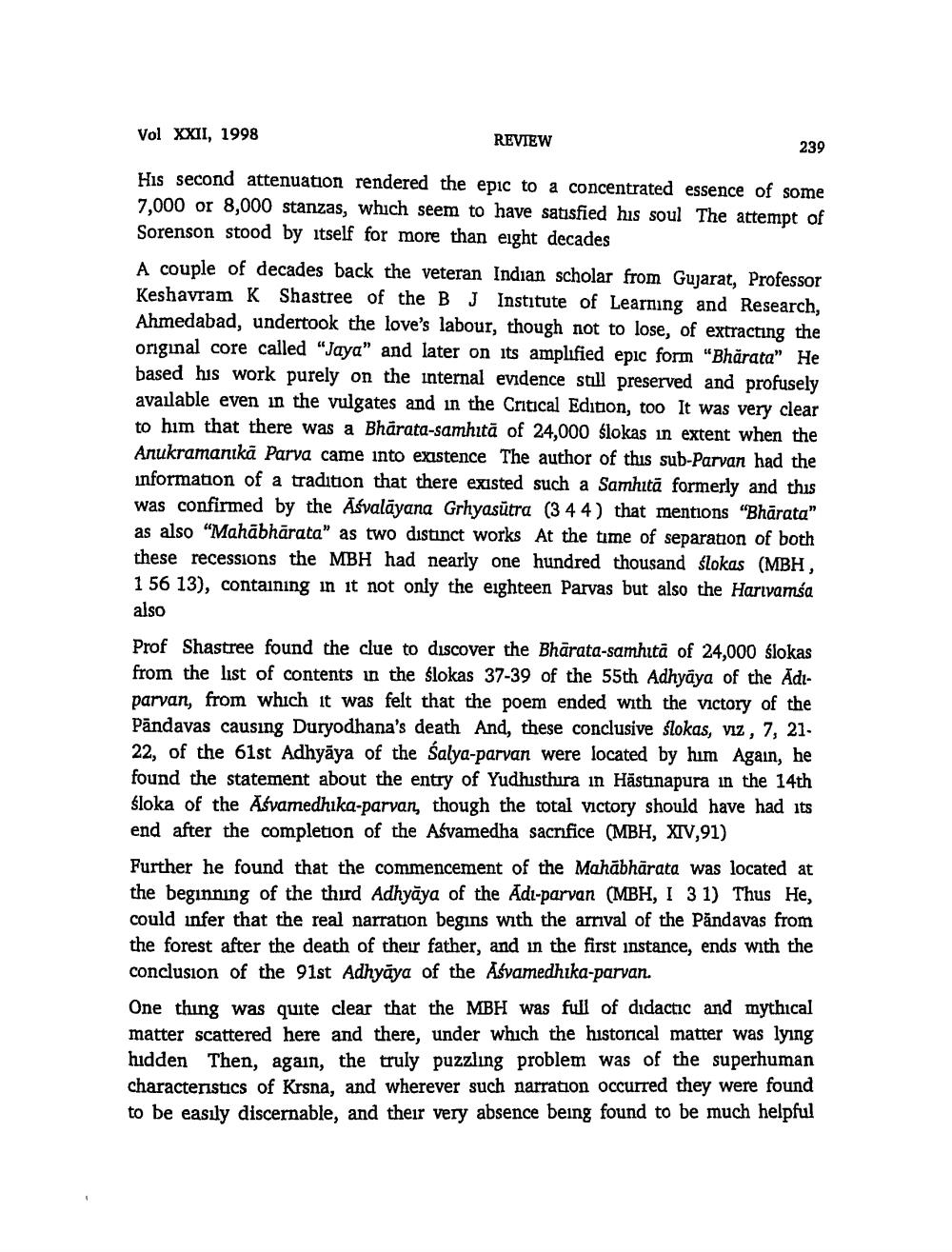________________
Vol XXII, 1998
REVIEW
239
His second attenuation rendered the epic to a concentrated essence of some 7,000 or 8,000 stanzas, which seem to have satisfied his soul The attempt of Sorenson stood by itself for more than eight decades A couple of decades back the veteran Indian scholar from Gujarat, Professor Keshavram K Shastree of the B J Institute of Learning and Research, Ahmedabad, undertook the love's labour, though not to lose, of extracting the original core called "Jaya" and later on its amplified epic form "Bhärata" He based his work purely on the internal evidence still preserved and profusely available even in the vulgates and in the Critical Edition, too It was very clear to him that there was a Bhārata-samhită of 24,000 ślokas in extent when the Anukramanıkā Parva came into existence The author of this sub-Parvan had the information of a tradition that there existed such a Samhitā formerly and this was confirmed by the Ašvalāyana Grhyasūtra (3 4 4) that mentions "Bhārata" as also "Mahābhārata" as two distinct works At the time of separation of both these recessions the MBH had nearly one hundred thousand slokas (MBH, 1 56 13), containing in it not only the eighteen Parvas but also the Harivamsa also Prof Shastree found the clue to discover the Bharata-samhita of 24,000 ślokas from the list of contents in the slokas 37-39 of the 55th Adhyāya of the Adiparvan, from which it was felt that the poem ended with the victory of the Pandavas causing Duryodhana's death And, these conclusive slokas, viz, 7, 21. 22, of the 61st Adhyāya of the Salya-parvan were located by him Again, he found the statement about the entry of Yudhisthira in Hästinapura in the 14th śloka of the Asvamedhika-parvan, though the total victory should have had its end after the completion of the Aśvamedha sacrifice (MBH, XIV,91) Further he found that the commencement of the Mahābhārata was located at the beginning of the third Adhyāya of the Adl-parvan (MBH, I 3 1) Thus He, could infer that the real narration begins with the arrival of the Pandavas from the forest after the death of their father, and in the first instance, ends with the conclusion of the 91st Adhyāya of the Ašvamedhika-parvan. One thing was quite clear that the MBH was full of didactic and mythical matter scattered here and there, under which the historical matter was lying hidden Then, again, the truly puzzling problem was of the superhuman characteristics of Krsna, and wherever such narration occurred they were found to be easily discernable, and their very absence being found to be much helpful




